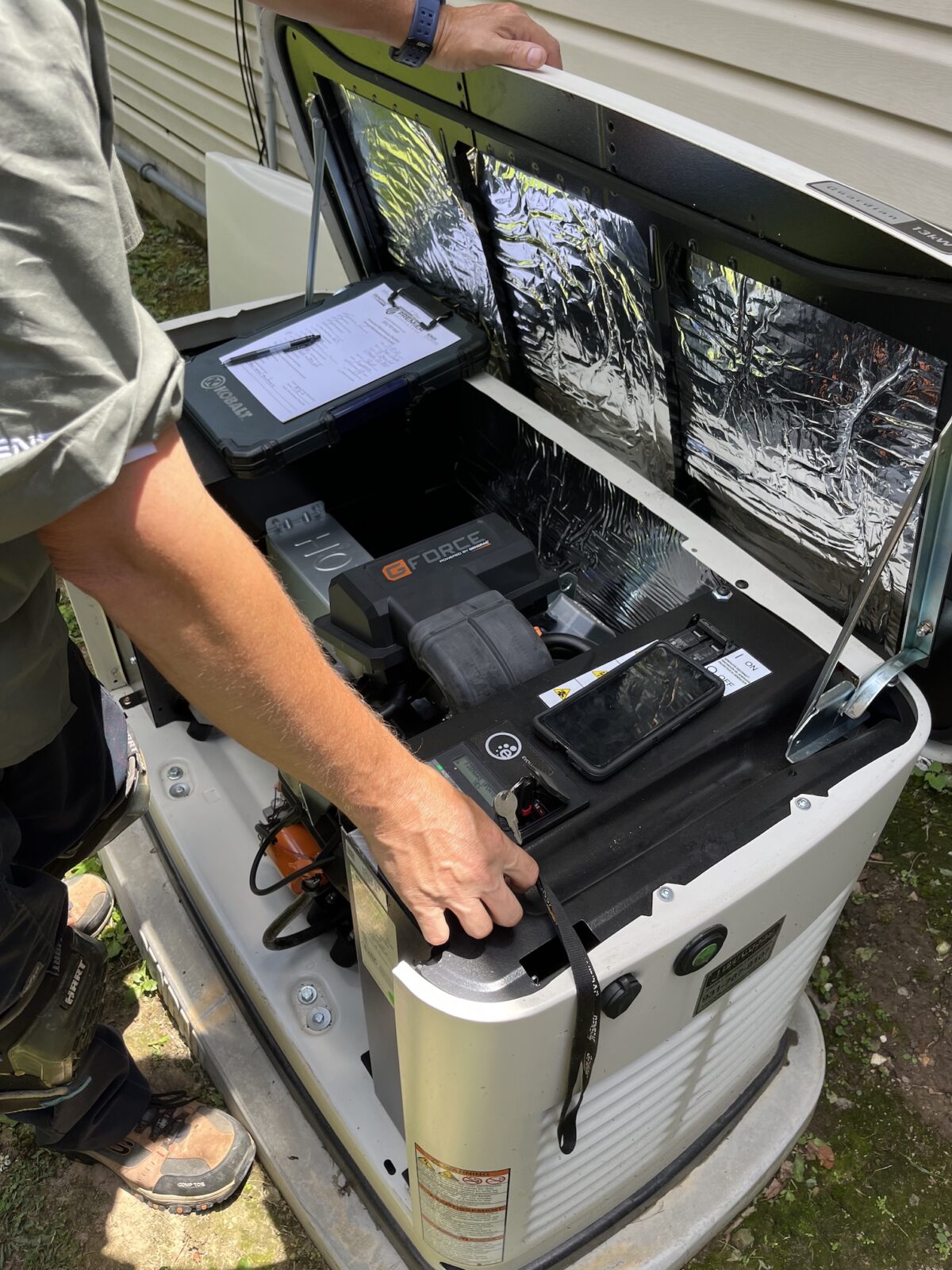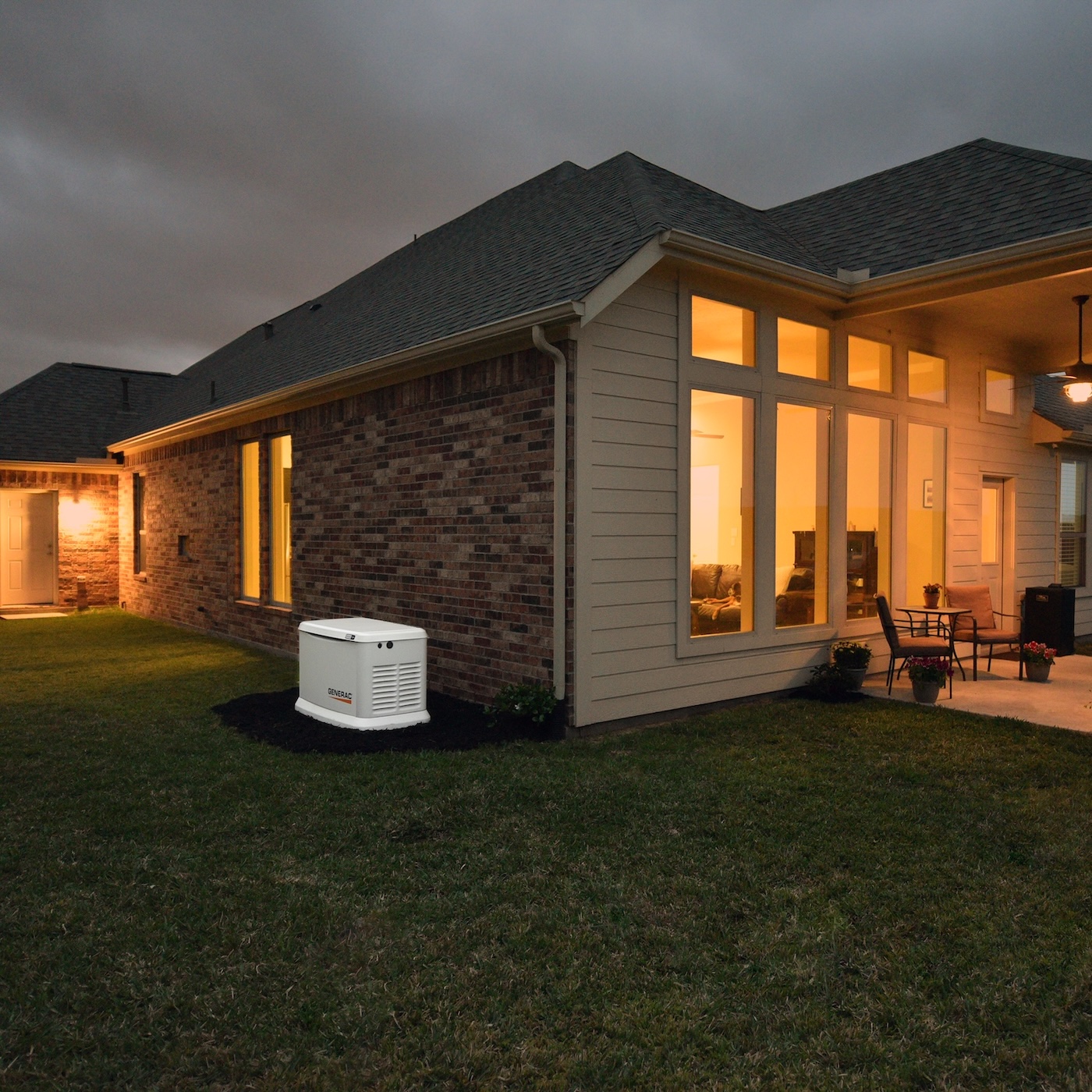26kW Generator Runtime on Natural Gas or Propane: How Long Will It Last?

Key Factors Affecting Runtime
The runtime of a 26kW generator is primarily determined by its fuel source, which is typically either Natural Gas (NG) or Liquid Propane (LP). Understanding how each fuel type affects runtime, along with other influencing factors like load demand and generator efficiency, is crucial for planning generator use during power outages or for backup purposes.
Load Demand and Power Output
One of the most significant factors in determining how long a generator can run is the load demand, which is the amount of power required to support connected appliances and systems.
- Full Load vs. Partial Load: At full capacity (100% load), the 26kW generator uses more fuel to produce the maximum 26 kilowatts of power. Conversely, at partial loads, such as 50% capacity, the generator consumes significantly less fuel, extending the runtime. For example, if the generator powers a household with essential systems like refrigerators, HVAC, and lighting, it might run at only 50-75% load most of the time.
- Load Fluctuation Effects: Varying power demands cause fluctuating fuel consumption. Consistent loads (e.g., steady operation of critical appliances) provide more predictable runtime estimates, while constantly changing loads can make it harder to gauge.
Fuel Consumption Rates: Natural Gas vs. Liquid Propane
A key factor affecting runtime is the type of fuel used. Generac 26kW generators are designed to run on either Natural Gas (NG) or Liquid Propane (LP), with each having different consumption rates and effects on runtime.
Natural Gas (NG) Consumption
Natural Gas is supplied through utility lines, providing a continuous fuel source, which means the generator can run for extended periods without needing to refuel, assuming no supply interruption.
- Consumption Based on Load: A 26kW generator running on natural gas typically has the following consumption rates:
- 50% Load: Around 225-250 cubic feet per hour (cfh)
- 75% Load: Around 320-350 cfh
- 100% Load: Approximately 400-425 cfh
- Natural gas is generally more cost-effective over time, and the continuous supply makes it ideal for extended runtime during prolonged outages.
Liquid Propane (LP) Consumption
Liquid Propane (LP) is stored in a tank and has a higher energy content than natural gas. However, the main limitation is the size of the propane tank and the need to refuel once the tank is empty.
- Consumption Based on Load: A 26kW generator running on liquid propane typically consumes:
- 50% Load: Approximately 2.5-3.0 gallons per hour
- 75% Load: Around 3.5-4.0 gallons per hour
- 100% Load: Roughly 4.5-5.0 gallons per hour
- Tank Size and Runtime: The runtime on propane is limited by the size of the tank. For example, a 500-gallon propane tank can provide:
- About 100-120 hours of runtime at 50% load.
- Shorter runtimes at higher loads, requiring refueling more often.
- While LP provides a longer runtime per gallon, it’s essential to monitor the tank level closely to avoid running out of fuel during an extended power outage.
Fuel Efficiency and Environmental Considerations
- Fuel Efficiency: Natural gas tends to be slightly less efficient than propane, requiring more cfh to produce the same power. However, its continuous availability can make it more practical for extended or unpredictable outages.
- Storage and Refueling: LP requires proper storage and planned refueling, especially in emergencies. Natural gas, however, does not require storage tanks, providing a hassle-free fuel supply as long as the utility lines are active.
Continuous vs. Limited Supply
- Natural Gas Supply: The generator can run indefinitely as long as the natural gas supply from utility lines remains intact. However, during certain emergencies, gas supply lines may be shut off or disrupted.
- Propane Supply: With a dedicated LP tank, the generator’s runtime depends on the size of the tank and fuel availability. A larger tank (e.g., 500 gallons or more) allows for extended runtime but requires planning for refills when levels get low.
Other Factors Influencing Runtime
- Generator Efficiency: A well-maintained 26kW generator operates more efficiently, consuming less fuel over time. This means more consistent runtime, whether using natural gas or propane.
- Weather and Temperature: Extreme cold can affect propane performance, as lower temperatures may reduce pressure in the LP tank. However, both natural gas and propane generators are generally reliable across a range of temperatures.
- Generator Age and Condition: A newer generator with up-to-date maintenance consumes fuel more efficiently, ensuring optimal runtime regardless of the load or fuel type.
How Long Can a 26kW Generator Run on Natural Gas or Liquid Propane?
When estimating how long a 26kW generator can run, both natural gas (NG) and liquid propane (LP) provide different runtimes based on fuel consumption, load, and availability. Below, we’ll break down the expected runtime for both fuel types, considering different load scenarios.
Runtime on Natural Gas
Natural gas generators benefit from a continuous fuel supply through utility lines, which means their runtime is potentially unlimited as long as the supply remains intact. However, the actual runtime is still determined by the generator’s fuel consumption rate and the load it is supporting.
Load Scenarios for Natural Gas:
- 50% Load (13kW): At half capacity, a 26kW generator consumes roughly 225-250 cubic feet per hour (cfh) of natural gas. Given that natural gas is provided via utility lines, this consumption can continue indefinitely. At this load, the generator is running efficiently, providing power to essential appliances and systems, like refrigerators, lights, and a few key devices.
- 75% Load (19.5kW): Operating at 75% capacity, the fuel consumption increases to approximately 320-350 cfh. This higher consumption is due to the increased power demand, such as running heating/cooling systems, additional appliances, and potentially some high-demand equipment.
- 100% Load (26kW): When running at full capacity, a 26kW generator will consume about 400-425 cfh of natural gas. This scenario typically involves the generator powering a significant number of devices or large equipment simultaneously.
Calculating Daily and Weekly Runtimes:
- At 50% load, the daily natural gas consumption would be around 5,400 to 6,000 cubic feet per day (24 hours of continuous use). Over a week, that totals approximately 37,800 to 42,000 cubic feet.
- At 75% load, expect daily usage of around 7,680 to 8,400 cubic feet, adding up to roughly 53,760 to 58,800 cubic feet for a week.
- At 100% load, daily consumption reaches approximately 9,600 to 10,200 cubic feet, totaling around 67,200 to 71,400 cubic feet over a week.
Remember, these numbers are based on continuous operation, and intermittent use will reduce total consumption and extend the generator’s effective runtime.
Runtime on Liquid Propane
For LP-fueled generators, runtime is dependent on the size of the propane tank and the consumption rate based on load. Since propane is stored in a tank with a finite capacity, the runtime will be limited to how much fuel is available before needing a refill.
Load Scenarios for Liquid Propane:
- 50% Load (13kW): A 26kW generator at half capacity uses approximately 2.5-3.0 gallons of propane per hour. If connected to a 500-gallon propane tank, this translates to roughly 160-200 hours of runtime, or about 6-8 days of continuous operation.
- 75% Load (19.5kW): At 75% capacity, propane consumption increases to around 3.5-4.0 gallons per hour. With a 500-gallon tank, this would provide approximately 125-140 hours of runtime, or around 5-6 days.
- 100% Load (26kW): At full capacity, the generator consumes about 4.5-5.0 gallons per hour. This consumption rate would provide around 100-110 hours of runtime on a 500-gallon tank, roughly 4-5 days.
Calculating Total Runtime:
- A larger tank (e.g., 1000-gallon) can double the runtime estimates provided above, extending the operational period before needing a refill.
- Regularly monitoring propane levels is essential, especially during extended power outages, to ensure the generator doesn’t run out of fuel unexpectedly.
Estimating Runtime for Your Needs
To determine how long your 26kW generator will run, consider the following:
- Average Load Requirements: Calculate the power demand based on the essential appliances and systems you need to keep running.
- Fuel Consumption Rates: Use the hourly consumption rates for natural gas or propane to estimate daily usage.
- Tank Capacity (for Propane): Determine how long your tank size will last based on your load and consumption rates.
Maximizing the Efficiency and Runtime of Your 26kW Generator
To ensure your 26kW generator runs efficiently and provides the longest runtime possible on natural gas or liquid propane, regular maintenance and strategic power management are essential. By taking proactive steps, you can optimize the performance of your generator and get the most out of every gallon of fuel.
Regular Maintenance and Service
One of the most effective ways to maximize your generator’s runtime is by keeping it well-maintained. Routine service not only ensures the generator operates efficiently but also prevents potential issues that could reduce runtime or cause failures during use.
- Regular Oil Changes and Filter Replacements: Clean oil and filters are essential for optimal performance. The generator’s engine will run more smoothly, consume fuel more efficiently, and experience less wear and tear.
- Air Filter and Spark Plug Checks: Air filters should be inspected and cleaned or replaced regularly to prevent dirt and debris from affecting engine performance. Similarly, checking spark plugs ensures proper ignition and reduces unnecessary fuel consumption.
- Professional Inspections: Having your generator inspected by a certified technician periodically can catch any potential issues early and ensure all components are functioning as expected.
Take Advantage of Our Maintenance Plans
To make maintenance easy and stress-free, we offer comprehensive maintenance plans for your 26kW generator. These plans include scheduled service visits, oil and filter changes, system checks, and proactive component replacements. Enrolling in a maintenance plan ensures:
- Optimal Generator Efficiency: Your generator runs smoothly and efficiently, maximizing runtime on both natural gas and liquid propane.
- Extended Equipment Lifespan: Regular care helps prevent wear and extend the life of your generator.
- Peace of Mind: Our team takes care of everything, so you don’t have to worry about missing service intervals or handling maintenance tasks.
By choosing a maintenance plan, you ensure your generator remains ready for any power outage and provides reliable, long-lasting performance.
Optimizing Load Management for Longer Runtime
Efficiently managing your generator’s load can greatly impact its runtime, whether you’re using natural gas or liquid propane. Proper load management can reduce fuel consumption, extend runtime, and avoid overloading the generator.
- Prioritize Essential Appliances and Systems: Only power the most necessary devices to minimize load demand. For example, during an outage, prioritize refrigerators, lighting, and critical medical devices while avoiding non-essential or high-demand equipment.
- Stagger Appliance Usage: Running all high-demand appliances simultaneously increases fuel consumption and reduces runtime. Instead, stagger the use of high-power items like air conditioners, water heaters, or sump pumps to spread the load more evenly.
- Use Transfer Switches for Better Control: A transfer switch allows you to easily manage which circuits are powered by the generator. This not only prevents overloading but also lets you switch between circuits based on priority, helping conserve fuel and extend runtime.
Factors That Could Limit Runtime
While a 26kW generator running on natural gas or liquid propane is designed to provide reliable backup power, there are several factors that could potentially limit its runtime. Understanding these factors can help you plan for power outages and ensure you’re prepared for any scenario.
Natural Gas Supply Interruptions
Natural gas generators benefit from a continuous fuel supply through utility lines, allowing for potentially unlimited runtime. However, natural gas lines are vulnerable to interruptions, particularly during major natural disasters or regional power outages. If the supply is disrupted, the generator will stop running until service is restored.
Tips to Mitigate Supply Interruptions:
- Stay informed of weather events or utility work that could impact your natural gas service.
- Consider having a backup propane tank or another fuel source if your generator is dual-fuel capable, allowing you to switch to propane if natural gas is unavailable.
Propane Tank Size and Refueling
For generators running on liquid propane, runtime is directly dependent on the tank size and refueling capability. Once the propane tank is depleted, the generator will stop running until it is refilled. Larger tanks allow for longer runtime but require planning for refueling, particularly during extended outages.
Tips for Managing Propane Supply:
- Keep an eye on your propane tank level, especially during prolonged use.
- Arrange for an extra tank or ensure you have access to timely refills from your propane supplier.
Generator Size, Efficiency, and Condition
- Generator Sizing: Running a generator at or near full capacity for extended periods will increase fuel consumption and potentially shorten runtime. If your power needs exceed the generator’s capacity, you may need to either reduce the load or consider a larger generator.
- Maintenance and Efficiency: A well-maintained generator will run more efficiently, consuming less fuel for the same power output. Neglected generators may run inefficiently, consuming more fuel and providing less runtime.
- Generator Condition and Age: As generators age, their efficiency can decline. Regularly inspect and service your generator to maintain optimal performance.
Environmental and Weather Conditions
- Extreme Cold or Heat: Extreme temperatures can affect both fuel consumption and generator performance. Propane can be particularly affected in cold weather, as the gas may not vaporize properly, reducing fuel efficiency.
High Altitudes: Generators running at high altitudes may experience a decrease in power output, requiring more fuel to produce the same level of electricity as at sea level.


